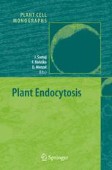Search
Search Results
-
PEGylation of Proteins as Tailored Chemistry for Optimized Bioconjugates
The high potential of peptides and proteins as therapeutic agents has not been fully exploited because of their common shortcomings: the only...
-
Polymer Therapeutics for Cancer: Current Status and Future Challenges
Drug delivery systems for cancer therapeutics have revolutionized medicine. Delivery systems have improved the efficacy and reduced the toxicity of...
-
Polymer Therapeutics: Polymers as Drugs, Drug and Protein Conjugates and Gene Delivery Systems: Past, Present and Future Opportunities
As the 21st century begins we are witnessing a paradigm shift in medical practice. Whereas the use of polymers in biomedical materials applications...
-
Polypeptide and Polypeptide Hybrid Copolymer Synthesis via NCA Polymerization
This article summarizes recent developments in the synthesis of polypeptides and hybrid peptide copolymers. Traditional methods used to polymerize...
-
Gene Delivery Using Polymer Therapeutics
The use of polymers as synthetic non-viral carriers for introducing nucleic acids into cells appears very appealing. Polymers can be generated in...
-
Solution Properties of Polypeptide-based Copolymers
The aggregation behaviour of biomimetic polypeptide hybrid copolymers and copolypeptides is here reviewed with a particular eye on the occurrence...
-
Nanostructured Devices Based on Block Copolymer Assemblies for Drug Delivery: Designing Structures for Enhanced Drug Function
Block copolymers spontaneously assemble into nanoscaled polymeric micelles, which have significant potential as drug carriers. Following much work...
-
Transcriptome analysis in abiotic stress conditions in higher plants
Drought, high salinity, and low temperature are major environmental factors that limit plant productivity. Plants respond and adapt to these stresses...
-
Signal transduction in plant cold acclimation
Temperate plants respond to low temperature by activating a cold acclimation program leading to enhanced tolerance to freezing temperatures. This...
-
Plant salt tolerance
Soil salinity adversely affects crop productivity and quality. The success of breeding programs aimed at salinity tolerant crop varieties is limited...
-
Plant responses to heat stress
The heat stress response is characterized by inhibition of normal transcription and translation, higher expression of heat shock proteins (hsps) and...
-
Sensors of abiotic stress in Synechocystis
Systematic mutagenesis of histidine kinases in combination with DNA microarray technology has allowed us to identify sensors for cold, hyperosmotic...
-
Abscisic acid signalling
Signalling of abscisic acid (ABA) in plants is characterized by an amazing number of secondary messengers that are part of the pathway or modulate...
-
Somatic and Zygotic Embryogenesis in Avocado
Avocado is a species widely cultivated for its highly nutritious fruit. Currently, soil-borne diseases such as Phytophthora root rot are severe...
-
Genomic and Molecular Analyses of Transporters in the Male Gametophyte
The major events of male reproductive development and function have been known for years, but the molecular and cellular bases of these processes...
-
Differential Gene Expression During Somatic Embryogenesis
Somatic embryogenesis is a complex developmental program in which somatic cells are induced for a commitment towards forming totipotent...
-
Embryogenesis in Catharanthus roseus: Roles of Some External Factors in Proliferation, Maturation and Germination of Embryos
Catharanthus roseus is an important medicinal plant that contains two well-known anticancerous alkaloids, vincristine and vinblastine. Cell...
-
Participation of Plant Hormones in Determination and Progression of Somatic Embryogenesis
In vitro culture protocols have been developed for many species, mainly using empirical approaches, to induce somatic embryogenesis from various...
-
Rab GTPases in Plant Endocytosis
The Rab family is part of the Ras superfamily of small GTPases. In eukaryotes Rab GTPases are present as members of gene families, and the...
-
Methods and Molecular Tools for Studying Endocytosis in Plants---an Overview
Proteins of the endocytosis machinery in plants, such as clathrin and adaptor proteins, were isolated and characterized using combinations of...
